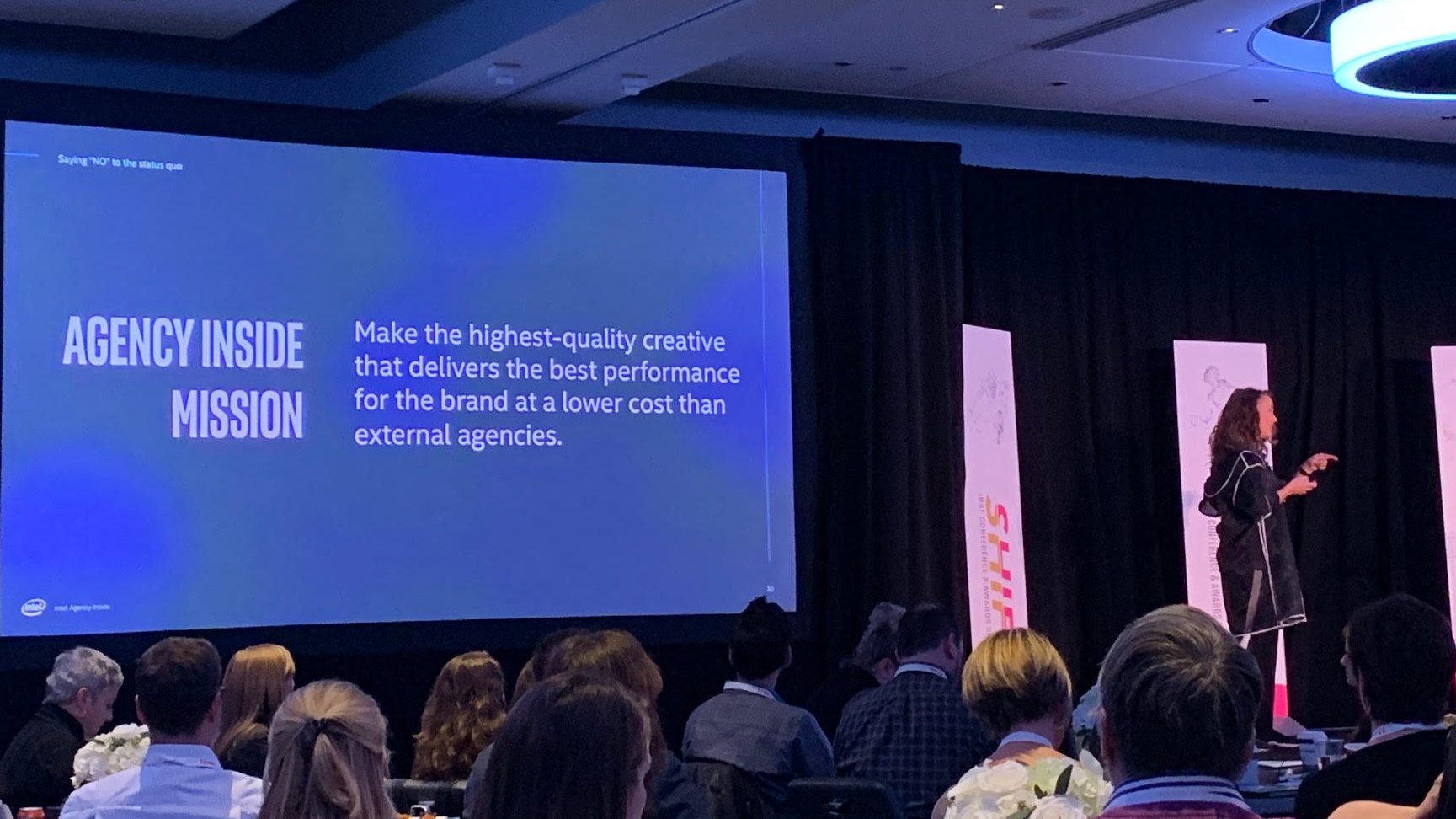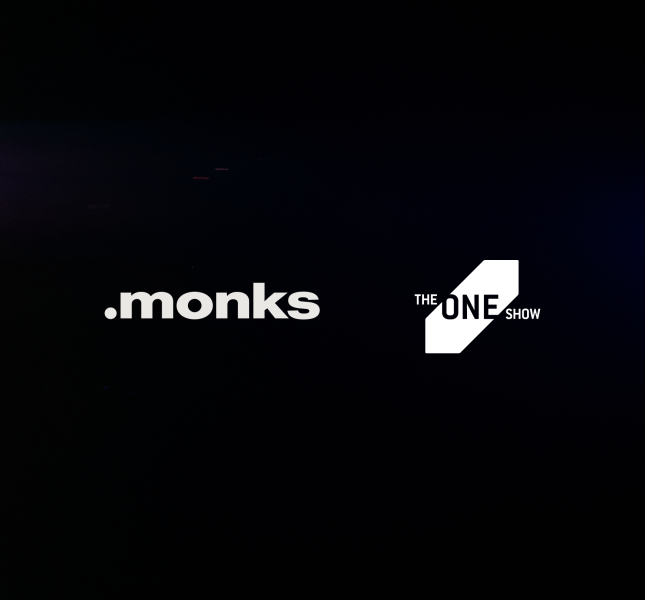In-House Agency Leaders Stress the Importance of Strategic Chemistry

That 78% of businesses have taken their marketing efforts in-house doesn’t mean it’s time to shutter up the windows and work by one’s lonesome. The latest trend in advertising is set to change the way businesses work and collaborate creatively.
The IHAF SHIFT Conference recently brought internal agencies together to celebrate their victories and discuss the biggest challenges they faced in the past year. The organization is dedicated to supporting in-house agencies through content, tools, and networking opportunities, and its roster includes members like Bloomberg, McDonald’s, Verizon and more.
Rather than rely solely on external agencies to conceptualize and deliver marketing materials and campaigns, these businesses have taken those responsibilities back within the organization. It sometimes feels like everyone is going in-house: according to an Association of National Advertisers report, 78% of polled businesses said they had some operations in-house. In addition to that, 90% of respondents with in-house operations said they saw an increase in in-house workload over the past year. There are many reasons why a business might take their marketing and media production internal, though every brand wants something different: lowered costs, faster turnaround times or to simply increase their marketing expertise.
In-house agencies aren’t just growing in numbers, though. They’re also growing in size, which means many find themselves tied to business-level results that were previously outside of their scope. This means cross-organization collaboration is more important now than ever: in this unprecedented territory of marketing, there’s safety in numbers.
Finding the Need with All Stakeholders
According to Teresa Herd, VP and Global Creative Director at Intel, many in-house agencies face several challenges from the inside. The problem isn’t just competition against other companies or external agencies, but rather the culture, strategy and infrastructure of the agencies themselves.

One of the biggest issues Herd says many in-house agencies grapple with? “I spoke to VPs of marketing at a large company who said they now have to pitch for every project they do,” she wrote over at AdAge. The problem, she mentioned at the conference, is that good chemistry between internal creative teams and the C-suite is essential for success. She attributes the achievements of Agency Inside, Intel’s own creative team, to its leadership’s willingness to take the time to define the business needs, then building the agency to support those specifically. The alternative is to go internal simply to save money or time without exploring what, exactly, the internal team will do and why.
In addition to understanding what the business needs, you must take a hard look at what it can do. What tasks are you equipped to accomplish? Agency Inside is a best-case scenario for an internal agency because it’s closely tied to Intel’s business strategy. But aligning with business goals doesn’t need to mean wearing all the hats in a project; while in-house agencies can own the creative concept and strategy, external agencies or production partners are available to help execute them. When you notice gaps in your resources or talent base, it’s time to consider specialized external partnerships that can meet those needs and help you realize your vision.
Restructuring to Execute the Need
While Herd discussed the importance of chemistry between creative teams and C-suite, Georgetown University Faculty Director Wendy Zajack went into more detail about how to revamp a business so their departments work together like a well-oiled machine. The best way to get all the cogs turning in harmony is to share skills and techniques in response to boundary-disrupting. For example, marketing and IT teams must come together to provide a better user experience by sharing objectives—perhaps even with team overlap. This is easier said than done: how do you create such cohesion between departments?
Technology is rapidly erasing these lines and redrawing the industry map.
The answer may lie in freeing data from silos. Limited in benefit when hoarded away, a freer data strategy has the potential to inform holistic business strategies that inform daily responsibilities across all departments in the company. To achieve this, businesses must first define where analytics can make the biggest impact, then prioritize use cases for that data. They might support more use cases when resources allow over time, but it’s important not to lose focus on where it’s most needed in the beginning. This process relies on team members who can “translate” this data and their uses between departments—like finding the overlaps between marketing and IT objectives mentioned above. Zajack says it’s increasingly important for organizations to use such innovative methods to “communicate in an increasingly crowded business environment.”
Collaborative Efforts Have a Huge Payoff
What does it look like when an internal agency uses their data more effectively? One example provided at the SHIFT conference was Avocados From Mexico, whose Super Bowl ad spot made in collaboration with GSD&M became one of the most talked-about campaigns of the year. While guacamole makes for a popular snack ingredient for the game, Avocados From Mexico noticed sales drop afterwards—and noted that Super Bowl ads alone aren’t that effective with loyalty or brand recall.
“The Super Bowl is an underrated opportunity,” Alvaro Luque, President of Avocados From Mexico, told the IHAF audience, perhaps turning heads. He elaborated: “If you see that as an ad, it will never pay off. But if you see this as an excuse to create a two-week campaign for the company, there’s no way you can do that and be that successful investing those dollars compared to the Super Bowl.” The sustained campaign was an effective response to slumping post-game sales. Compared to five years ago when the business had no digital marketing presence, Avocados From Mexico gained 14 billion additional brand impressions per year and increased Mexican imports by 73%.
“Here we’re seeing that the market is especially eager to create digital extensions of their campaigns,” said Louis Moncouyoux, Creative Director at the MediaMonks Mexico City office. “We’re working to educate and translate our global insights to them quickly, because campaigns are most effective when built comprehensively.”
In other words, the most successful elevated experiences are coming from campaigns articulated across brand touch points.
Building such campaigns is exciting, though agencies without the self-awareness discussed by Herd or the agility championed by Zajack might struggle to pull off such a big win. This is why it’s so important for businesses to get a handle on what they and their audiences need, how prepared they are to meet it and who to turn to when filling in all the gaps. This level of chemistry between departments and partners makes all the difference between campaigns that explode with a bang versus those that just fizzle out.
Related
Thinking
Sharpen your edge in a world that won't wait
Sign up to get email updates with actionable insights, cutting-edge research and proven strategies.
Monks needs the contact information you provide to us to contact you about our products and services. You may unsubscribe from these communications at any time. For information on how to unsubscribe, as well as our privacy practices and commitment to protecting your privacy, please review our Privacy Policy.



